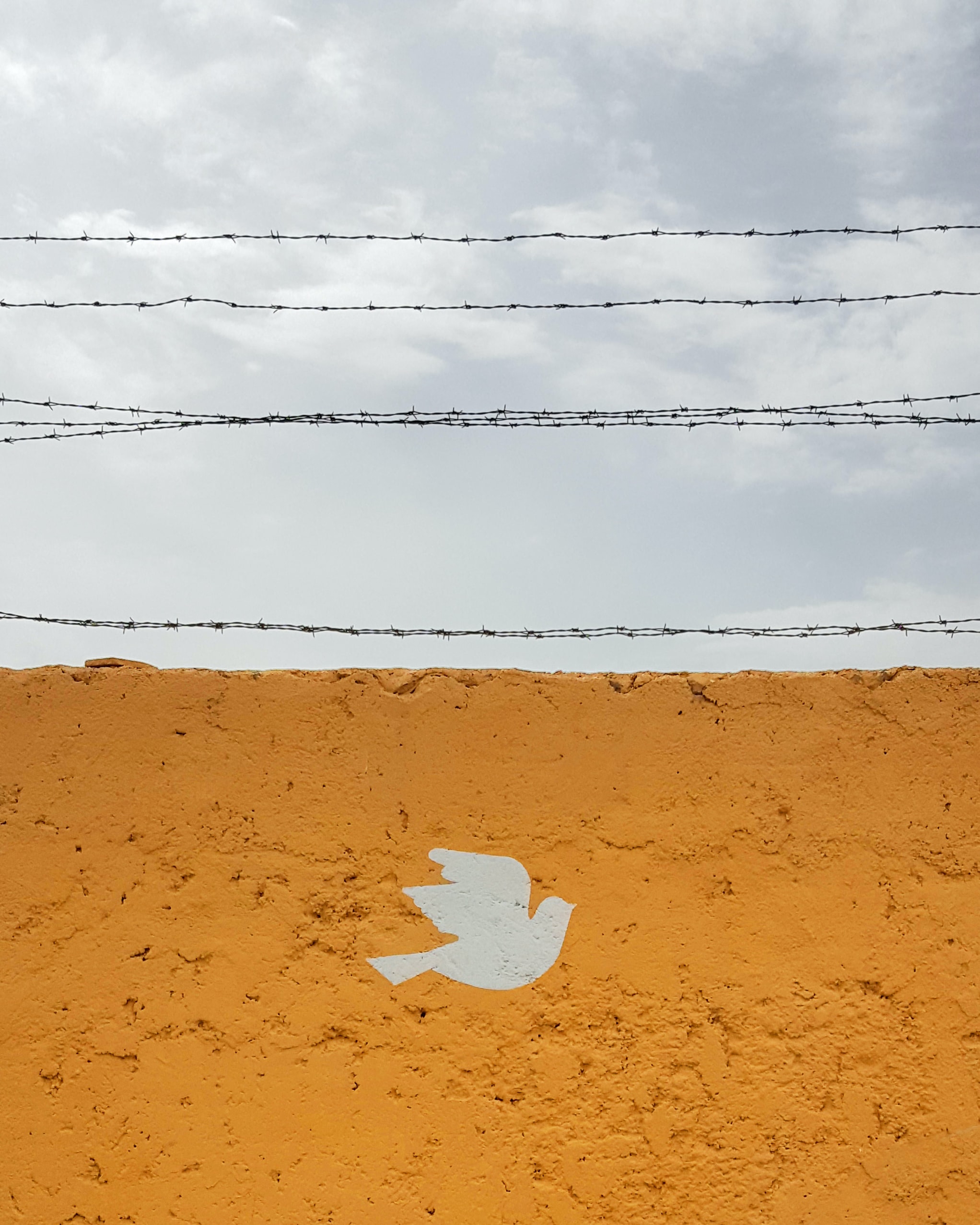
According to many, a multitude of doves is known as a dole, dole or flight. As we come to Pentecost – fifty days, 7 weeks, the 7th Sunday after the Resurrection of Jesus, we arrive at the Festival of Shavuot. This Festival comes from Numbers 28:26-31 where fifty days have passed since Passover and celebrates the giving The Torah or The Law of Moses at Mount Sinai. It’s quite a mixed collection of Hebrew events with links onwards from Christ’s Resurrection. Those links are often seen with symbols. Welcome the dove.
Symbol of the Dove

The symbol of the dove isn’t anything new to those in the Middle East. The dove has persistently represented the divine, and was often denoted as the mother goddess. The dove represented feminine fertility and procreation, and came to be well-recognized symbols of the Canaanite goddess Asherah and her counterpart Astarte, as well as her Phoenician and later Punic embodiment, Tanit. First-century B.C. coins from Ashkelon bore a dove, which represented both the goddess Tyche-Astarte and the city mint. The same city mint that made the coins for the Temple Tax. The Jews, it is believed, linked the goddess Asherah with the consort of their god Yahweh. Hence that linkage may have suggested the use of the “feminine” symbol of the dove to represent the spirit of God (the word for “spirit,” ruach, is a feminine word in Hebrew).
We see the dove hovering at Noah’s ark, and also mentioned in the older, ancient Babylonian Epic of Gilgamesh. Doves also had a place in the Temple in Jerusalem as sacrifices. We might recall Simeon and Anna at the Temple and meeting with Mary & Joseph as they came with their sacrifices. They came to present Jesus for circumcision 7 days after birth according to the Law, but then again also 33 days later for Mary, presenting 2 turtle doves for her offering. Welcome the dove.
The atoning quality of doves led to comparisons in the Talmud and the Targums with Isaac and Israel. According to these extra-Biblical sources, just as a dove stretches out its neck, so too did Isaac prepare to be sacrificed to God, and later Israel took on this stance to atone for the sins of other nations.
Biblical Archeology
Com-panion
In the passage from John’s Gospel (John 15:26-27 and John 16:4-15) God promises an advocate, one whom will testify of God, from God, to us. The Holy Spirit is also seen as a Companion, one whom we break bread with. The Spirit will guide, allowing us to make sense of all that has been said and done. “He talks from me and delivers to you” as it says in The Message (John 16:15).
As with any letter we may need to pay heed to the context. The Gospel was written some time after the Synoptic Gospels of Matthew, Mark and Luke. It was written to the emerging ‘The Way’ community. It was directed to Jews and Gentiles who followed Jesus and his teachings post Resurrection amidst the background of the prominent Jewish faith (and other religions). In the Lectionary we may notice that John 16:1-3 have been omitted. Here, it mentions the rough times ahead : better to be pre-warned so they could be ready for such times. Welcome the dove.

Holy Spirit
We are told that we need the Holy Spirit to interpret the Scriptures. The Bible was written in human languages following human rules of spelling, grammar, and coming out of completely human situations lived in by human authors. Therefore, to interpret the Bible you need to be a human, one who can read words and understand sentences. What is important is that the Holy Spirit is the one who interprets what God is saying to us – not only through the Bible but through prayer.
If the Spirit were to allow us to interpret Scripture perfectly there would be no need for so many commentaries or indeed preachers.
Pentecost
The Spirit is seen arriving upon Jesus at his Baptism. It is seen arriving with the disciples in the upper room. Jesus shows his wounds to demonstrate that he is real and not a ghost. It is seen arriving with Peter and the multitude in Acts 2.
Perhaps rather than one arrival, these stories depict the reassurance of God’s presence in the Spirit being present for all time. The dove symbol is a way of depicting what is boundless in spatial dimensions – more akin to Ruach, the wind.
Perhaps this Pentecost, we may wish to focus upon God’s presence in the good times and the bad times. Including the ones that the Lectionary omitted but which are still so pertinent. Thou we may not see the Spirit physically, we may see the effects of the Spirit in all that we do and be. Welcome the dove.
Warning
If we are talking about interpretation, how does any of this sound in the 21st C? How might we express this today, in words that all could understand?
Cover photo by Hasan Almasi on Unsplash

You asked how we might understand it today , often when we think of pentecost we think of tongues , fire and miracles . For me the holy spirit is the ever present spirit of god , always there even in the darkest nights , the comforter .whose presence has seen me through many dark nights .
And I would agree with you, especially in the days when uncertainty is evident with lockdown etc. I wonder how those who pass by the church might understand what Pentecost means, if at all?
Or to understand that just as at pentecost when the disciples were at their lowest , when all their dreams had been shattered , penteost gave them rebirth , a new vision that in the end changed the world .For me my own pentecosts have often been found in brokeness and shattered dreams .
I like that!